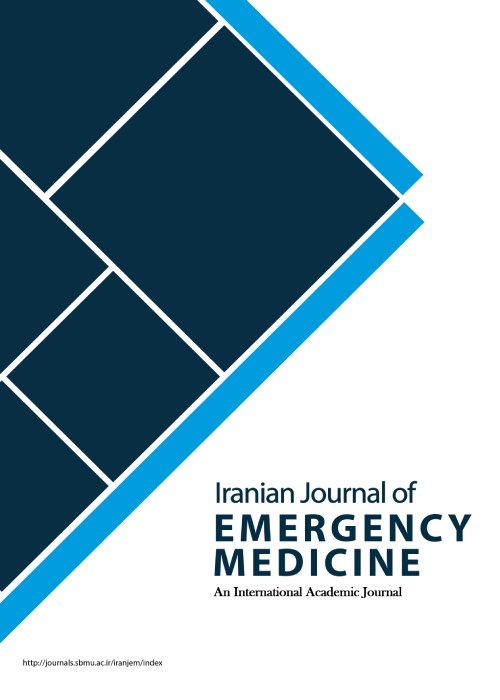Measuring Fibrinogen Level in Patients with Pelvic Trauma
Author(s):
Abstract:
Pelvic fracture is the second most common cause of death in trauma patients after head trauma; and the major reason for death in these patients is hemorrhage and its resulting hypovolemic shock. Rapid and proper diagnosis and treatment can improve the outcome of these patients. The main treatment consists of fixation of the pelvis and resuscitation of patients hemodynamic using isotonic liquids and blood products until the condition is favorable for surgery or angiography. New findings show that fibrinogen plays a vital role in reaching and maintaining homeostasis, especially in patients that have lost a significant amount of blood. It seems that concentration of plasma fibrinogen, which is a key glycoprotein in the coagulation cascade, is independently related to hemorrhage and prophylaxis infusion of fibrinogen concentrate can decrease bleeding. Fibrinogen level has been introduced as a determining factor in prediction of 28-day mortality of patients with heavy traumatic bleeding. Compared to fresh frozen plasma (FFP), injection of fibrinogen concentrate has had better results in improvement of outcome and has decreased need for other blood components and has led to an increased probability of survival without increasing the risk of venous thromboembolism. A study in 2015 showed that 19.2% of the patients with severe hemorrhage due to trauma had a fibrinogen level less than 2gr/L. Writers of the current letter evaluated 60 patients with traumatic pelvic fracture with the mean age of 51.12 ± 20.30 years (11-85) (58.30% male). 42 (70.0%) cases had presented with 1-sided or double sided ramus fracture, 17 (28.3%) cases with iliac wing fracture and 1 (1.7%) case with acetabulum fracture. 16.7% of the patients had a hemoglobin level less than 10 mg/dL and 21.7% had systolic blood pressure less than 90 mmHg on admission to emergency department. Mean blood level of fibrinogen in this group of patients was 261.85 ± 40.24 mg/dL (200-368). In other words, considering the normal range described for the kit used for this study (Mahsa Yaran Company, Iran) none of the patients were in the hypofibrinogenemia zone (
Language:
Persian
Published:
Iranian Journal of Emergency medicine, Volume:4 Issue: 4, 2017
Pages:
143 to 145
https://magiran.com/p1746243
دانلود و مطالعه متن این مقاله با یکی از روشهای زیر امکان پذیر است:
اشتراک شخصی
با عضویت و پرداخت آنلاین حق اشتراک یکساله به مبلغ 1,390,000ريال میتوانید 70 عنوان مطلب دانلود کنید!
اشتراک سازمانی
به کتابخانه دانشگاه یا محل کار خود پیشنهاد کنید تا اشتراک سازمانی این پایگاه را برای دسترسی نامحدود همه کاربران به متن مطالب تهیه نمایند!
توجه!
- حق عضویت دریافتی صرف حمایت از نشریات عضو و نگهداری، تکمیل و توسعه مگیران میشود.
- پرداخت حق اشتراک و دانلود مقالات اجازه بازنشر آن در سایر رسانههای چاپی و دیجیتال را به کاربر نمیدهد.
In order to view content subscription is required
Personal subscription
Subscribe magiran.com for 70 € euros via PayPal and download 70 articles during a year.
Organization subscription
Please contact us to subscribe your university or library for unlimited access!


